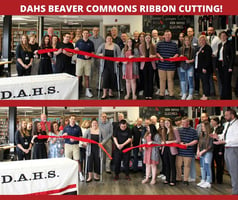On Friday, March 4, 2022 the DuBois Area High School (DAHS) hosted a Ribbon Cutting Ceremony to...
Processes Explained: Resin Impregnation & Warm Die Compaction
What are the reasons to use resin to impregnate a part?
Resin is impregnated into a part for a few different reasons. The resin allows a part to be sealed so it can be used in pressure applications such as resisting air or hydraulic pressure. That same sealing function keeps liquids from being absorbed into the pores of a part whether it is on a plating line, paint line or in an environmental application. An additional benefit is the resin acts as a machining additive, improving the tool life on a part that needs to be machined to net form. In all of these applications, the resin remains stable, up to approximately 400°.
What are the benefits or purposes of warm die compaction?
We should start out by describing what warm die compaction means. The molding tooling is heated to slightly below 220° F/104°C. Then, unheated powder is fed into the cavity. Due to the tools’ temperature and the inter-particle friction that takes place during compaction, the dry lubricant present within the powder blend enters a liquid phase. Compaction with liquid lubricant allows us to use material with reduced amounts of lubricant, which improves the movement of the particles during compaction, and aids in the ejection of the part.
The major impact that the warm die compaction process has on the molded component is that it allows the part to be pressed to a higher density which can make a stronger component.
A side benefit is that the warm die compaction warms the powder, which can assist in reducing the tonnage required to press the part.
So in applications where the limits of the press size are being pushed or when stress that is placed on the tool is a concern, warming actually makes it easier to form a part.



